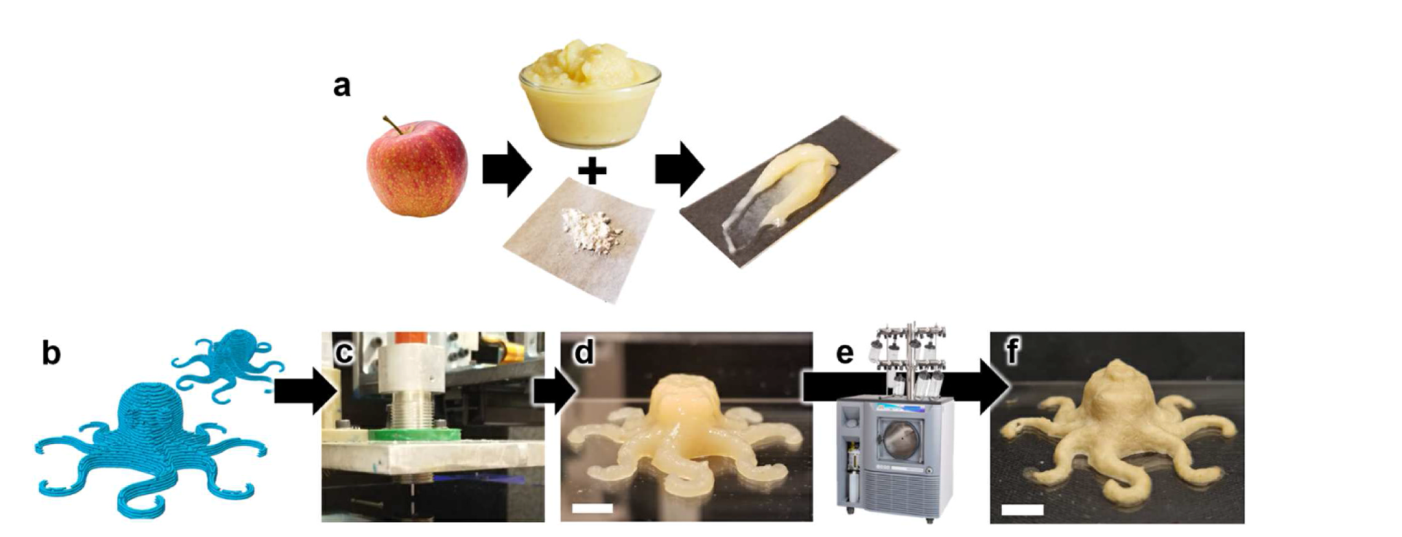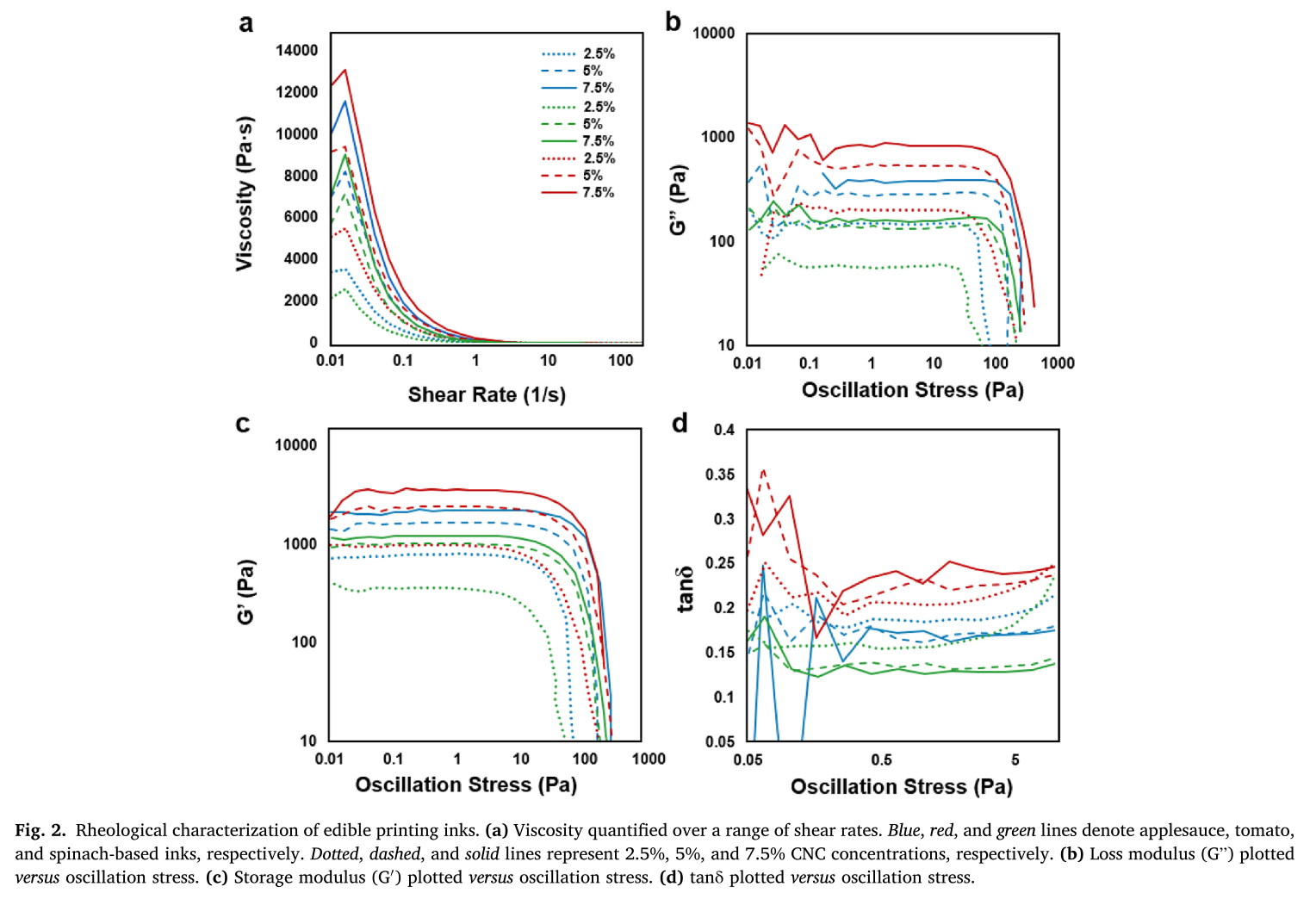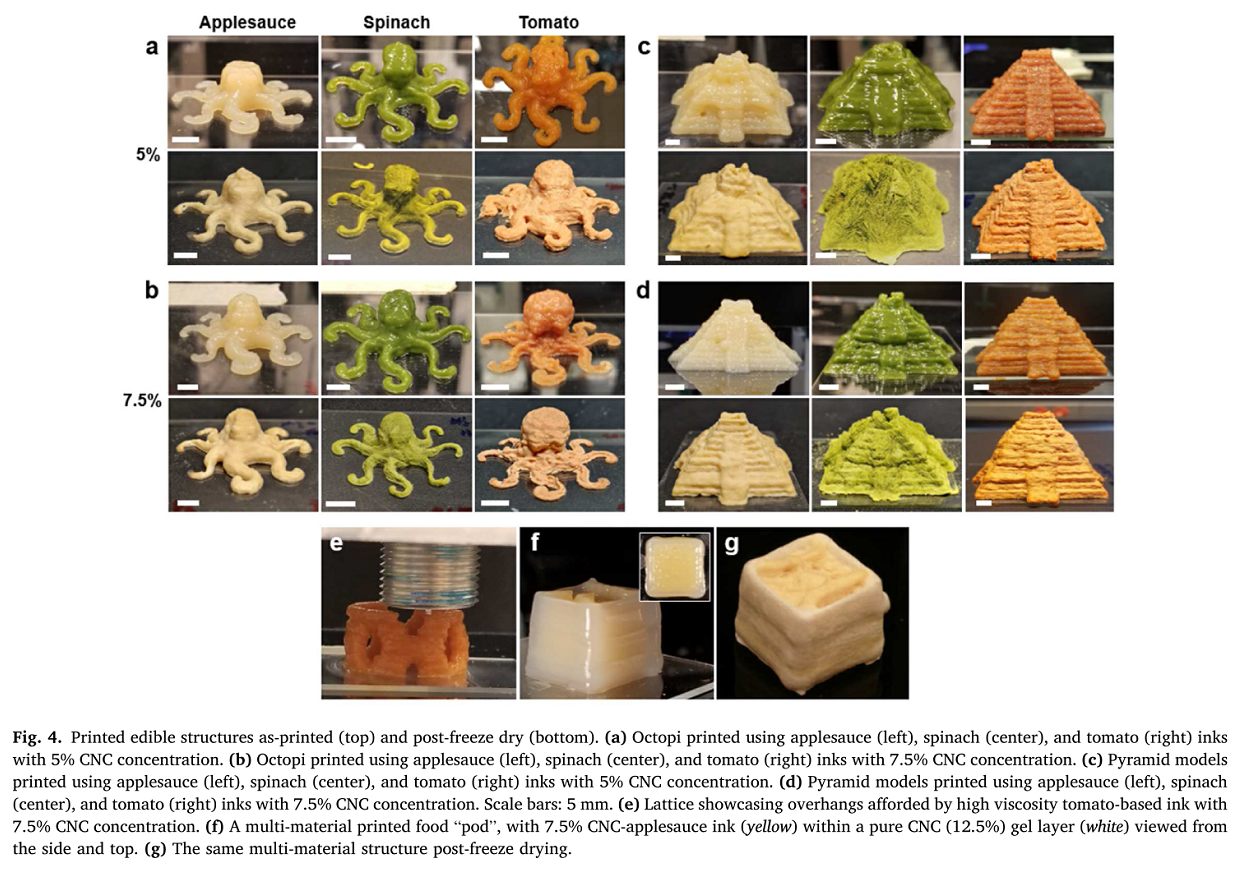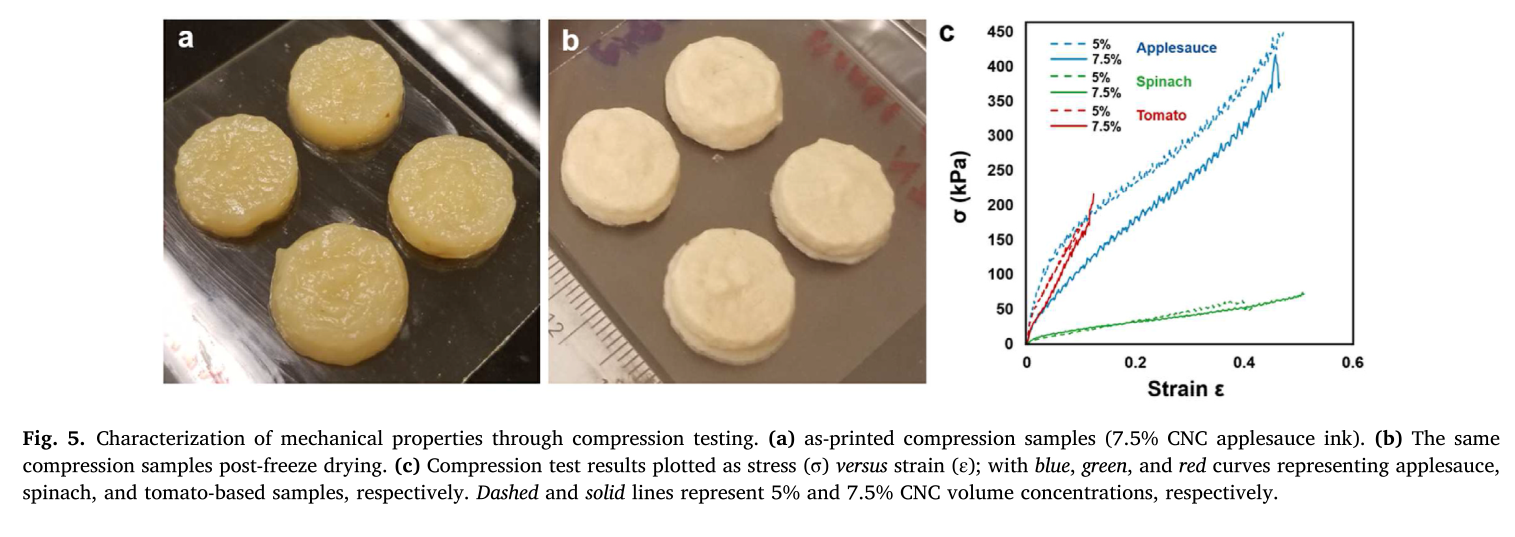Introduction: Additive manufacturing using edible raw materials is known as “edible three-dimensional (3D) printing”, a unique method of food manufacturing that is visually more attractive through the production of customizable nutritional formulas and printed models food.in numerous3D printingIn technology,direct write ink(DIW)3D printingbecauseits low costandeasy to useAnd become a popular choice for edible 3D printing.However, due to many potential edible raw materials (such asfoodThe low viscosity of puree) is very unsuitable for DIW printing, so the types of food suitable for DIW 3D printing are limited.
In April 2022, researchers from Georgia Tech’s School of Mechanical Engineering proposed the use ofCellulose Nanocrystals (CNCS)As a safe and renewable printing raw material, DIW 3D printing of various food products, especially spinach puree, tomato puree, and applesauce, was achieved, and the final solid structure was obtained through a freeze-drying process. Let’s take a look at their specific research!

In the study by researchers from Georgia Tech’s School of Mechanical Engineering, they first analyzed the rheological properties of food usingDifferent volume fractions of carbon nanotubes produce printable inks with shear thinning properties.then passimage processing technologyThe print quality of different inks was analyzed. Finally, the ability to numerically control the ink was demonstrated by printing a variety of structures, including multi-material structures.This study found that carbon nanotubes are an effective feedstock for food additive manufacturing, promoting shear thinning and sticky behavior in the studied edible feedstocks, properties necessary for DIW 3D printing of self-supporting edible structures.

△ The process of converting raw food into printable food structures. (A) The mashed applesauce was mixed with CNCS to make a shear-thinning printable ink. (B) SlicingsoftwareFront view and isometric view of octopus model in medium. (C) DIW for printing edible structures 3D printer. (D) The octopus model after printing. (E) Freeze dryer for sublimation of ice crystals from frozen structures. (F) Freeze-dried final product.
Rheology is an important indicator of whether a material is suitable for DIW manufacturing. The ink must have tunable viscosity to create viscoelasticity, enabling the layer stacking required to create self-supporting 3D structures, and exhibit shear-thinning behavior for flow through the deposition nozzle during printing. The researchers mainly investigated the effect of concentration on viscosity, G’, G’ and tanδ, and observed that all edible inks exhibited good shear thinning characteristics, the viscosity curve was close to a negative power-law trend, and the maximum viscosity increased with concentration increases.

△ Study of material properties
Various structures were printed using 5% and 7.5% edible ink and nozzles with a diameter of 1.194 mm. Test results showed that the applesauce ink exhibited the best surface finish after freeze drying, while the structures printed with the spinach and tomato inks exhibited voids or roughness.

△ Research on print quality
Through multi-material 3D printing, edible ink is encapsulated in a CNC gel to create an edible outer layer.Neat gel outer layer as availablebiologyDegradable and edible protective shells with the potential to reduce or eliminate packaging of edible print structures.

△Printed products and multi-material printing
The researchers also investigated the mechanical properties of edible food structures after freeze drying. The present results suggest that CNCS can expand the range of printed food,Thereby enabling more edible 3D printing applications with broad prospects.

△Mechanical properties of food
More information can be found in the original text:https://doi.org/10.1016/j.jfoodeng.2022.111086
(responsible editor: admin)


0 Comments for “New research: Cellulose nanocrystals (CNCS) could expand the range of materials for food 3D printing! Spinach, Tomato, Apple are all printable!”